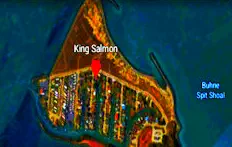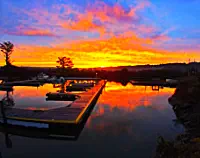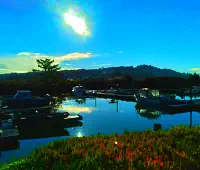
King Salmon is an unincorporated community in Humboldt County,
California, United States, located on the shore of Buhne Point directly across
from the entrance to Humboldt Bay, slightly south of Eureka and 1 mile (1.6
km) north of Fields Landing, at an elevation of 3 feet (0.91 m). It has a Eureka
zipcode and area code and is part of Greater Eureka.
Overview:
Once a small fishing enclave, primarily containing summer homes or
vacation homes and is the former site of the Humboldt Bay Nuclear Power
Plant. The Sequoia Humane Society is a privately funded no-kill shelter for
dogs and cats that sponsors "Woofstock" every year at Eureka's Halvorsen
Park.
King Salmon is served by the Redwood Transit System, has marina services
and a recreational vehicle park as well as a public picnic area on the top of
Buhne Point adjacent to the power plant. Construction of a groin in 1983
slowed erosion along the shoreline of King Salmon, sand was added to make
the beach.
As sea-level rise (SLR) inundation maps proliferate, it is important to study
their politics – both how they are created and how they act upon and shape
various lives and places. This paper uses the example of King Salmon, CA –
a rural, low-income residential area projected to be one of the most at risk to
SLR on the US West Coast – to examine how a community responds to
external projections showing SLR risk to their homes and businesses.
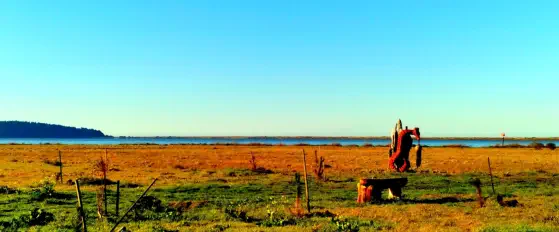
Email: brucesierrabrown@gmail.com
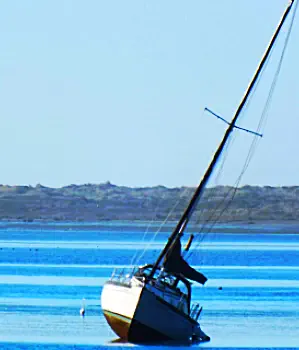
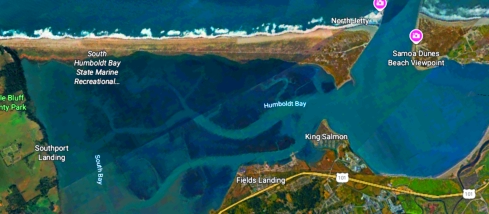
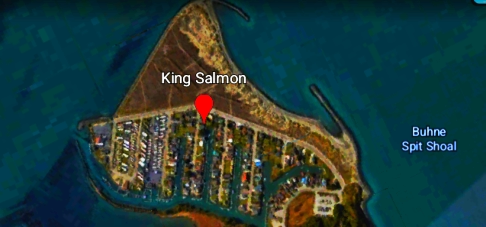
Copyright 2025 Bruce Brown. All Rights Reserved


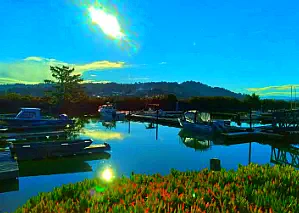


King Salmon
is an unincorporated
community in Humboldt
County, California, United
States, located on the shore of
Buhne Point directly across
from the entrance to Humboldt
Bay, slightly south of Eureka
and 1 mile (1.6 km) north of
Fields Landing, at an elevation
of 3 feet (0.91 m). It has a
Eureka zipcode and area code
and is part of Greater Eureka.
Overview:
Once a small fishing enclave,
primarily containing summer
homes or vacation homes and
is the former site of the
Humboldt Bay Nuclear Power
Plant. The Sequoia Humane
Society is a privately funded no-
kill shelter for dogs and cats
that sponsors "Woofstock"
every year at Eureka's
Halvorsen Park.
King Salmon is served by the
Redwood Transit System, has
marina services and a
recreational vehicle park as well
as a public picnic area on the
top of Buhne Point adjacent to
the power plant. Construction
of a groin in 1983 slowed
erosion along the shoreline of
King Salmon, sand was added
to make the beach.
As sea-level rise (SLR)
inundation maps proliferate, it
is important to study their
politics – both how they are
created and how they act upon
and shape various lives and
places. This paper uses the
example of King Salmon, CA – a
rural, low-income residential
area projected to be one of the
most at risk to SLR on the US
West Coast – to examine how a
community responds to
external projections showing
SLR risk to their homes and
businesses.






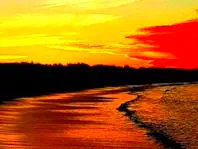

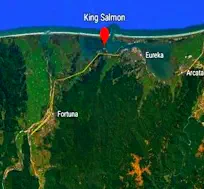
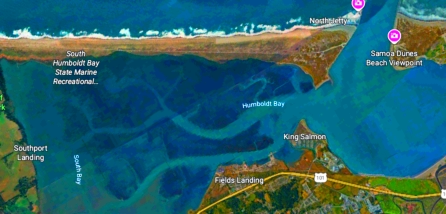
Copyright 2025 Bruce Brown. All Rights Reserved
Email: brucesierrabrown@gmail.com
